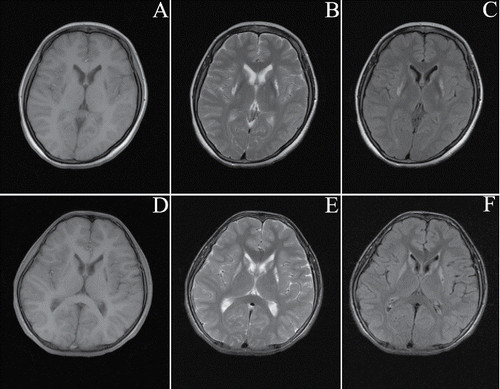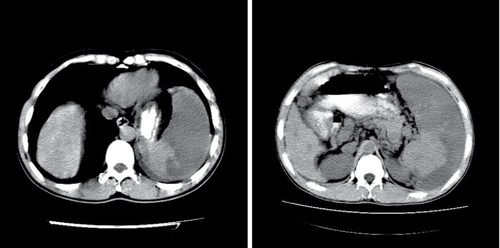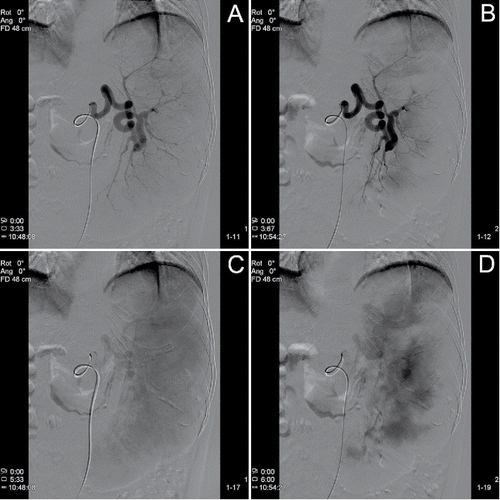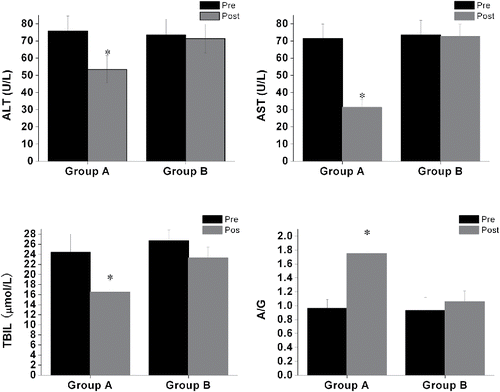Figures & data
FIGURE 1. Brain MRI of a patient with Wilson's disease. A, D: T1WI reveals a symmetric low signal in the bilateral basal ganglia; B, E: T2WI reveals a symmetric high signal in the bilateral basal ganglia; C, F: Axial fluid attenuated inversion recovery (FLAIR) MRI reveals a symmetric high signal in the bilateral basal ganglia.

TABLE 1. Clinical characteristics of hypersplenic patients with WD before PSE or splenectomy (means ± SDs)
FIGURE 3. Computed tomography (CT) of the abdomen after embolization. The low-density region represents the infarcted area of the spleen.

FIGURE 4. Changes in the WBC and PLT counts before and after PSE (group A, n = 25) or splenectomy (group B, n = 25). Values are expressed as the means ± standard deviations. *Significant increase at the indicated time point (7, 14, 21, 28, or 35 days after the procedure) compared with the pre-PSE or pre-splenectomy values in each group (*P < 0.05).



